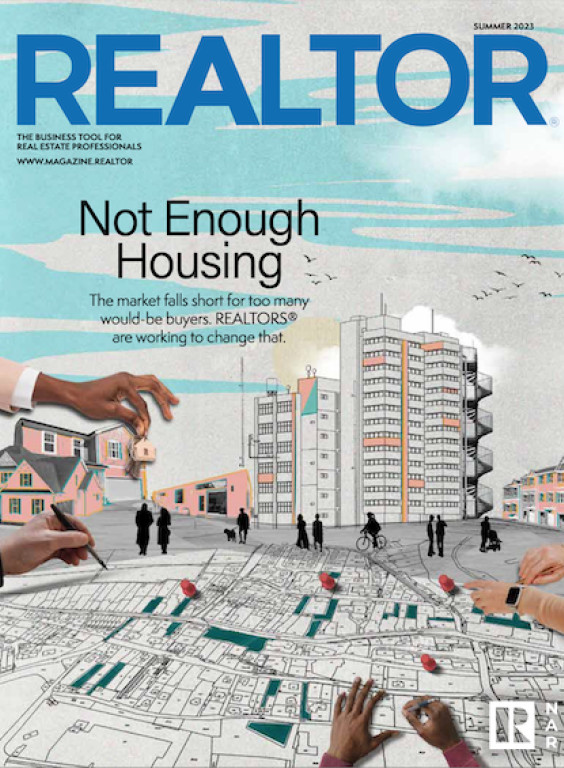On the Front Lines
The political and practical complexity of housing production has made it a low political priority for years, but skyrocketing housing prices have finally captured the attention of lawmakers at the state and local levels.
“There’s a lot of energy around state-level housing policy at the moment, which is very exciting to see,” says Jenny Schuetz, senior fellow at Brookings Metro. She points to Oregon’s legalization of “missing middle” housing statewide a few years ago, Massachusetts’ new law to create more apartments near transit stations, and efforts by Montana and Utah to make it easier to build “abundant, diverse housing to accommodate the increased demand created by work-from-home.”
Mike Kingsella, CEO of Up for Growth, a national network committed to solving the housing shortage through evidence-based research and policy, agrees. “A body of policy is emerging in cities and states nationwide, and we believe that the best approaches combine sticks, carrots and new resources,” he says. “All of these offer slightly different models, both in policy design and political framing.” (See Steps in the Right Direction below.)
REALTORS®, members of the National Association of REALTORS®, are crucial players in the policy arena. That’s because no one is more attuned to the challenges facing buyers and sellers locally. To identify and confront barriers in their market, many state and local REALTOR® associations have found success with the help of community outreach and issues mobilization funding from the National Association of REALTORS®.
In Blount County, Tenn., a zoning proposal before the County Council would have placed severe new restrictions on housing development, increasing minimum lot sizes and eliminating planned unit and cluster development. The Knoxville Area Association of REALTORS® organized to defeat the proposal, mobilizing members to fill the hearing room on the day of the vote with dozens of people wearing REALTOR® blue.
“Overly restrictive zoning regulations are perhaps the single largest barrier to affordable housing both in East Tennessee and throughout the United States,” says Hancen Sale, government affairs and policy director with the Knoxville association. ”Since most zoning decisions occur at the county and municipal level, local REALTOR® associations are on the front lines of this debate, and we have the opportunity to vocally champion the cause of housing affordability.”
With a housing shortage larger than the national average, the Spokane Association of REALTORS® leveraged an NAR grant to fund a study by the Counselors of Real Estate, an NAR affiliate. The result: an 89-page report with a road map of proven solutions for the city of Spokane, addressing everything from in-fill development to leadership and staffing of the municipal planning department.
The association worked with the city on adoption of a pilot zoning change that would allow duplexes and townhouses in all residential neighborhoods, plus triplexes and fourplexes near commercial zones and transit lines. The city’s planning director said the initiative aims to increase density while matching the look and feel of a neighborhood. “The Counselors’ report gave us instant credibility and helped us offer answers,” says Tom Clark, 2020 president of Spokane REALTORS®.
The U.S. Department of Housing & Urban Development released in April a set of best practices for communities grappling with housing shortages. HUD is now accepting requests for technical assistance to help local governments ensure housing needs are considered as part of their larger infrastructure investment plans.
“Buyers have faced a trifecta: historically low housing inventory, home prices that have risen for over a decade, and higher interest rates today than a year ago. The share of first-time buyers has dropped to a 41-year low, the divide between Black and White homeowners has grown to the widest point in a decade, and the share of single women entering has declined.”
Jessica Lautz, NAR’s deputy chief economist and vice president of research
A Housing Finance System for All
While REALTORS® continue to advocate for increased housing supply, improvements in the housing finance system are also needed to help more creditworthy Americans attain homeownership. Buyers who lack generational wealth, who are not W-2 wage earners, or who have “thin” credit files or medical or student loan debt may fail to qualify for mortgages even though they reliably pay the rent.
NAR has long advocated for updated credit scoring models designed to responsibly expand mortgage credit for millions of Americans. And late in 2022, Fannie Mae and Freddie Mac announced they would implement newer credit scoring models that account for data such as positive rental payment history and utility payments. Research by the Urban Institute has found that a significant share of Black and Hispanic households whose mortgage applications were denied in 2020 could have been approved if 12 months of positive rental payments were included in the underwriting.
“FHFA’s adoption of FICO 10T and Vantage 4.0 is a major step toward a more inclusive mortgage market,” says Vanessa Gail Perry, professor of marketing, strategic management and public policy at the George Washington University School of Business. “This will benefit the almost 30% of households with sparse or missing credit histories, thereby removing a major barrier to access to the mortgage market, particularly for Black and Brown consumers.”
Redressing Discrimination and Income Hurdles
With REALTOR® support, some states are taking their own actions to encourage homeownership among groups that have been excluded in the past.
Recently, the Washington REALTORS® Association successfully lobbied for a state law that will provide down payment and closing cost assistance to “those who were prohibited from owning a home in Washington because of racially restrictive covenants, or their descendants.”
The program will be funded by adding $100 to the document recording fee assessed on real estate transactions. In an op-ed in the Washington News Tribune, 2023 President Alisha Harrison wrote, “Those who were barred from homeownership didn’t just suffer personally; their children and grandchildren continue to pay the price.” Noting that the biggest predictor of homeownership is whether one’s parents were homeowners, Harrison continued, “As a mechanism, creating a new homeownership account for descendants of those who were denied housing opportunities is simple; as a solution, its effects will be profound.”
Whatever their background, far too many households find the barriers to entry too high. The 2023 president of the Mid-Shore Board of REALTORS® in Maryland, Megan Rosendale, wanted to help local tradespeople and service providers afford to live close to where they work. “All too often, we see electricians, servers and nurses commute long distances, even from Delaware, to work in our local counties” due to affordability challenges, notes Rosendale.
MSBR created the Love Down Payment Grant program for people working in five neighboring counties who want to buy near where they work. Says Rosendale, “What better way to be vested in the local community than if they are living and working in the same place?”









